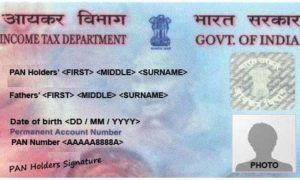A Post Office Savings Account requires a minimum deposit of Rs 500 to be opened.
These days, Post Office Savings Schemes are growing increasingly popular in the country due to the competitive interest rates they offer. These investments provide secure and timely pay outs. There are a number of small savings schemes available such as the National Savings Certificate, Sukanya Samriddhi Yojana (SSY), Public Provident Fund, Senior Citizen Savings Scheme (SCSS), Kisan Vikas Patra. The Post Office Savings Scheme offers a high rate of interest, tax benefits and is backed by the Indian government.
Read More: EMIs Set To Soar As Various Banks Hike Lending Rates
Details on Post Office Savings Account:
A Post Office Savings Account requires a minimum deposit of Rs 500 to be opened. Domestic customers have the option of opening either an individual or joint account. Deposits in the Post Office account earn 4 per cent per annum in interest.
On request, you can get a cheque book, an ATM card, e-banking and mobile banking services, and other services with your account. At the end of each fiscal year, interest is credited to the post office account. Individuals are entitled to a deduction of up to Rs 10,000 from their total income under Section 80TTA of the Income Tax Act.
Read More: 7th Pay Commission: Central Govt Employees’ Salaries Likely To Rise Soon As 4% DA Hike Expected
Details on Post Office Time Deposit Account (TD)
There are four tenure options for Post Office Time Deposit accounts: one year, two years, three years and five years. This account accepts a minimum deposit of Rs 1,000. The interest is calculated quarterly but credited annually.
Below are the interest rates for Q2 FY 2023-24 that is from July 1, 2023 to September 30, 2023:
– 1-year account: 6.9 per cent.
– 2-year account: 7 per cent.
– 3-year account: 7 percent.
– 5-year account: 7.5 per cent.
Post Office Saving Schemes: Benefits
The savings plans are simple to join and are ideal for both rural and urban investors. These schemes are a good option for anyone who wants to reduce risk in their investment portfolio and go in for fixed returns. These schemes have emerged as a popular savings and investments alternative due to their accessibility and the advantage of government backing. These plans offer risk-free interest rates ranging from 4 per cent to 8.2 per cent.
The majority of these programmes qualify for tax breaks u/s Section 80C of the Income Tax Act. A few programmes such as the PPF and the Sukanya Samriddhi Yojana get exemption on the interest earned from taxation.
The investments in Post Office Schemes are long-term in nature, with the investment period for a PPF account stretching up to 15 years. As a result, these schemes are ideal if you want to have a corpus of funds for your retirement.





































